
 |
| (Graphic: Chinadaily.com.cn) |
Nation 'still capable of keeping steady growth momentum in second half'
China's economy grew by 7.6 percent year-on-year in the first half, a marked slowdown in comparison with near double-digit growth recorded two years ago.
A government spokesman said that reducing the growth rate is aimed at making room for rebalancing the economy.
The nation is capable of keeping growth momentum steady for the rest of the year, even though the economic environment is expected to remain grim and complicated, he added.
The government's yearly GDP growth target for 2013, set earlier this year, is 7.5 percent.
Sheng Laiyun, spokesman for the National Bureau of Statistics, said that despite the slowdown, China's growth is still higher than that in other major economies.
The nation saw economic growth fall to 7.5 percent in the second quarter, from 7.7 percent in the first and 7.9 percent in the fourth quarter of 2012.
Investment was the biggest growth driver in the first half of the year, contributing 4.1 percentage points to the 7.6 percent rate, while consumption contributed 3.4 percentage points and net exports 0.1 percentage point, the bureau said.
Industrial output in the first six months grew by 9.3 percent from a year earlier, compared with a 10.5 percent increase in the first half of 2012.
Annual growth of fixed-asset investment in the first half lost some steam, rising 20.1 percent year-on-year, down from 20.9 percent.
Meanwhile, consumer goods retail sales rose by 12.7 percent, 1.7 percentage points lower than in the first two quarters of 2012.
The slowdown was caused by the weak global economic recovery and measures taken by the new leadership, Sheng said.
Jonathan Holslag, a research fellow at the Brussels Institute of Contemporary China Studies, said the figures send a very strong signal that the central government is making efforts to rebalance the economy.
"The growth rate is still optimistic when considering the scale of China's economy and is still contributing a lot to the global economy," said Holslag.
But he said this year will be very challenging for the country to restructure the economy against a backdrop of global hardship. Holslag stressed that the risks the government faces come from the banking sector and the stock market.
Wang Jun, a senior economist at the China Center for International Economic Exchanges, a government think tank in Beijing, said China still faces pressure from downside risks in the second half.
"It may push the government to take measures ... to further expand domestic demand. Otherwise, difficulties may arise from tight local government financing and increasing unemployment," Wang said.
He denied that a large stimulus package will be needed, as the new leadership may tolerate a growth rate of no less than 7 percent.
After the statistics bureau released the first-half growth figures, JPMorgan Chase downgraded its forecast for the year's growth to 7.4 percent from 7.6 percent, saying manufacturing investment and overseas demand remain weak.
"A slowdown of GDP growth to 7.5 percent will not trigger a change in policy stance," said Zhu Haibin, chief economist in China with the US bank.
"The new government made it clear that it is willing to tolerate slower growth for better quality of growth. Economic restructuring is the priority task going ahead." Zhu said.
On Monday, Nomura Securities said it will keep its GDP growth forecast for this year at 7.5 percent, but lower it to 6.9 percent for 2014.
"We expect growth to bottom in the second quarter of 2014 at 6.5 percent," said Zhang Zhiwei, the chief economist in China for the company.
"We now expect the central bank to cut the reserve requirement ratio by 50 basis points in each quarter from the third quarter of this year to the second in 2014," Zhang said.
He does not view this cut as a policy easing measure, but as a measure to react to liquidity outflows.
China H1 economic statistics:
• China's Q2 GDP slows to 7.5 pct
China's gross domestic product growth slowed to 7.5 percent in the second quarter of 2013, down from 7.7 percent during the first quarter, data from the National Bureau of Statistics (NBS) showed on Monday.
Growth in the first half of the year stood at 7.6 percent, which is in line with market expectations and was above the government's full-year target of 7.5 percent.
• China's fixed-asset investment up 20.1 pct in H1
China's urban fixed-asset investment grew 20.1 percent year on year to 18.13 trillion yuan (2.94 trillion U.S. dollars) in the first half of 2013, the National Bureau of Statistics (NBS) announced on Monday.
• China's H1 industrial output up 9.3 pct
China's industrial value-added output rose 9.3 percent year on year in the first half of 2013, the National Bureau of Statistics (NBS) announced on Monday.
The pace was down by 0.2 percentage points from the growth rate in the first quarter this year, and further slows from a 10-percent full-year growth registered in 2012, the NBS data showed.
• China's H1 retail sales accelerate to 12.7 pct
China's nominal retail sales grew 12.7 percent year on year to 11.08 trillion yuan (1.8 trillion U.S. dollars) in the first half of 2013, the National Bureau of Statistics (NBS) announced Monday.
The growth rate picked up by 0.3 percentage point from the first quarter, according to the NBS data.
• China's H1 fiscal revenue rises 7.5 pct
China's fiscal revenue grew 7.5 percent year on year to 6.86 trillion yuan (1.12 trillion U.S. dollars) in the first six months of the year, according to data released by the Ministry of Finance on Monday.
The pace was 4.7 percentage points lower than the same period of last year, and slightly lower than the country's economic growth of 7.6 percent in the first half, said the ministry.



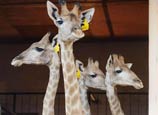
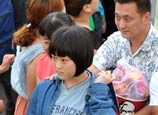
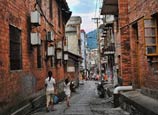


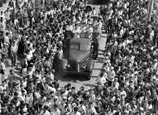
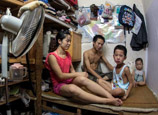






 College student car models show youthful vigor
College student car models show youthful vigor


![]()
